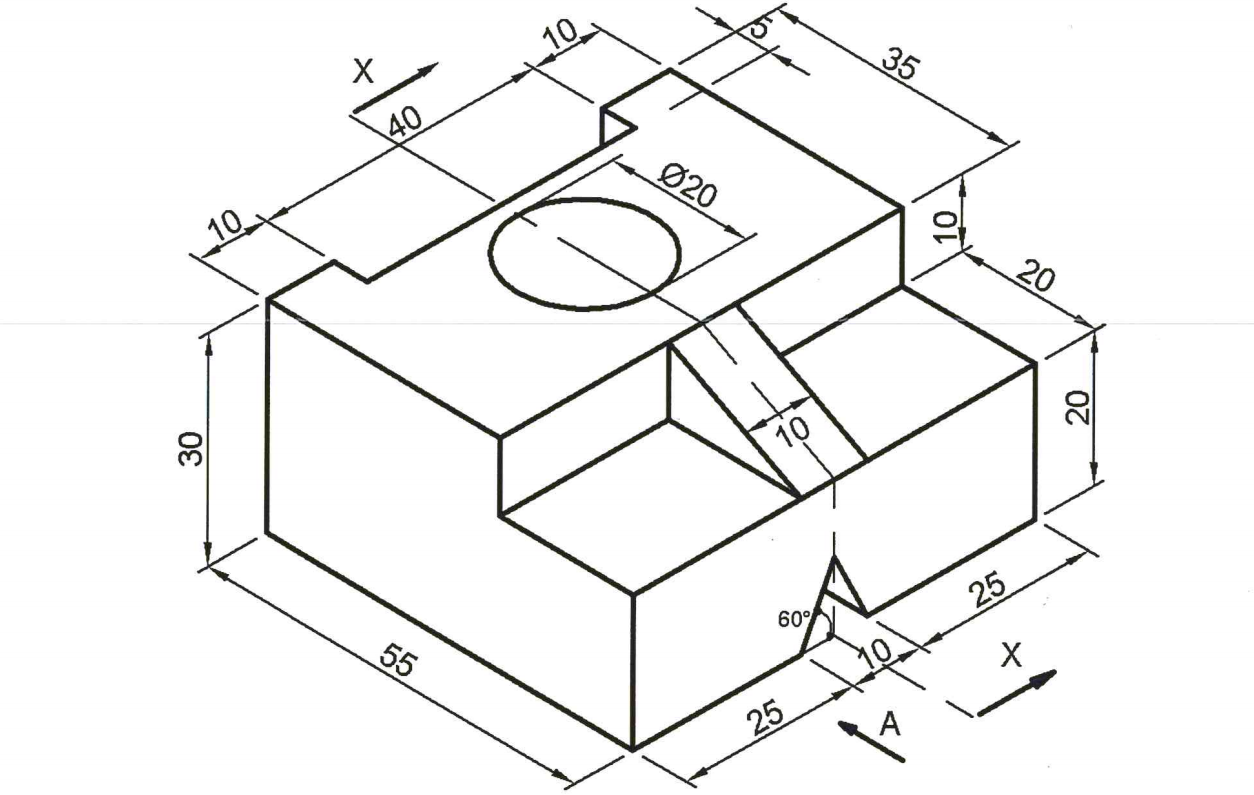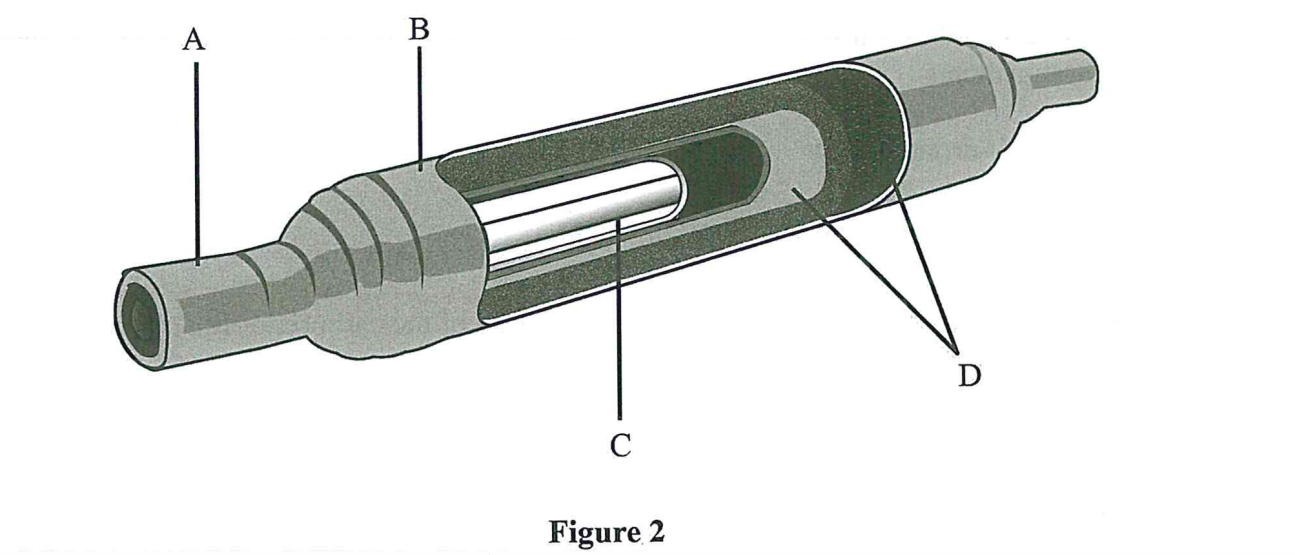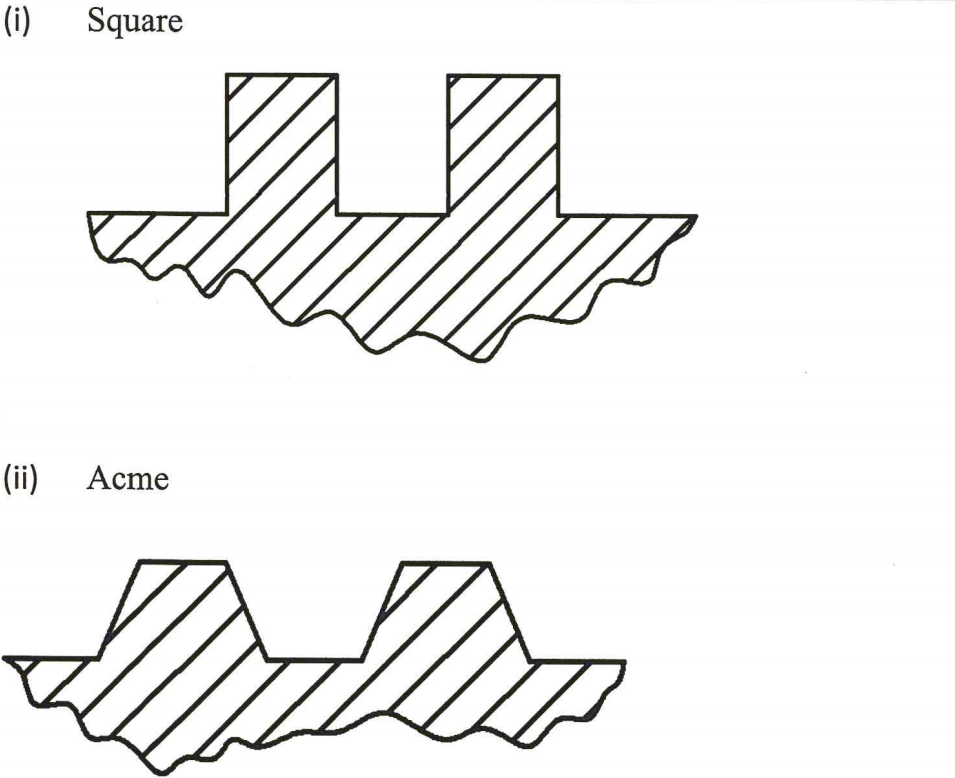KNEC KCSE Past Papers 2019 Power Mechanics Paper 1 (447/1)
KCSE Past Papers 2019 Power Mechanics Paper 1
1. State the purpose of yellow lines in a power mechanics workshop. (1 mark)
(b) State three factors which should be considered when locating an automotive spare parts store. (3 marks)
2. (a) State two safety precautions which should be observed when working with grease and Oils. (2 marks)
(b) Sketch each of the following types of screw threads.
(i) square (1 marks)
(ii) acme (1 marks)
3. (a) State the purpose of each of the following tools in a motor vehicle garage:
(i) puller (1 mark)
(ii) telescopic gauge (1 mark)
(b) Explain the operational difference between an external circlip and an internal circlip.(2 marks)
4. (a) Describe the energy conversion cycle in a conventional internal combustion engine.(2 marks)
(b) Describe the volumetric efficiency of an engine. (2 marks)
5. (a) Explain one negative effect of high compression ratio in an engine.(2 marks)
(b) State two properties of copper that makes it attractive for use in auto-electrics.(1 marks)
6. (a) State two functions of seals in an engine.(2 marks)
(b) Outline two reasons for carrying out ignition timing.(2 marks)
7. (a)State the effect of:
(i) too small contact breaker points gap (1 marks)
(ii) too big contact breaker points gap (1 marks)
(b) State two methods used by motor vehicle designers to reduce crankshaft whip. (2 marks)
8. (a) Outline two causes of excessive sulphation of a vehicle battery.(2 marks)
(b) State three advantages of brazing over fusion welding.(3 marks)
9. (a) Explain the following terms as used in braking systems:
(i) brake fade(1 marks)
(ii) primary shoe(1 marks)
(b) State the purpose of the safety ridge near the lips of a tyre rim.(1 marks)
10. (a) Name four types of springs used in vehicle suspension systems.(2 marks)
(b) Outline two reasons for having caster angle in steering geometry.(2 marks)
SECTION B (60 marks)
Answer question 11 on A3 paper provided and any other three questions from this section in the spaces provided.
Candidates are advised to spend not more than 25 minutes on question 11.
11. Figure 1 shows a machine block drawn in isometric projection.

Using a scale of 2:1, draw in first angle projection the following views:
(a) Front elevation in the direction of arrow A;
(b) A sectioned end elevation along the cutting plane x — x.
NB. The Ø 20 mm is a through hole and the 10mm V-trough also goes through the block.(15 marks)
12. (a) Figure 2 shows a component of a vehicle system.

(i) State the name and type of the component.
(ii) Name the parts labelled A, B, C and D. (2 marks)
A …………………
B …………………
C …………………
D …………………
(iii) Explain how the component works. (3 marks)
(b) Interpret the meaning of each of the following types of smoky exhausts and in each case, state two possible causes. Complete the table.(9 marks)
| Type of Smoke | Meaning | Possible Causes |
|---|---|---|
| Blue | (i)
(ii) |
|
| Black | (i)
(ii) |
|
| White | (i)
(ii) |
13. (a) State three reasons why petrol should have high volatility. (3 marks)
(b) Using sketches, illustrate the four-cylinder engines with the following types of cylinder arrangements:
(i) V-arrangement (2 marks)
(ii) horizontally-opposed arrangement (2 marks)
(c) With the aid of a diagram, explain the operation of the carburettor float circuit of a single cylinder engine.(8 marks)
14. (a) List two functions of the crown and pinion assembly of the differential unit. (2 marks)
(b) (i) Sketch a 8uid coupling assembly and label six parts.(7 marks)
(ii) Explain the operation of the coupling when the engine is:
(a) idling (2 marks)
(b) running at low to medium speed (2 marks)
(c) running at medium to high speed (2 marks)
15. (a) State the purpose of each of the following valves in a braking system.
(i) metering valve (1 marks)
(ii) proportionating valve (1 marks)
(b) Outline the procedure of bleeding air out of a braking system. (7 marks)
(c) State two possible causes of each of the following faults in motor vehicle electrical circuits.
(i) Head lights dim when engine is idling (2 marks)
(ii) Wiper fails to operate (2 marks)
(iii) Horn sound is faint (2 marks)
Marking Scheme
KCSE Past Papers 2019 Power Mechanics Paper 1
1. State the purpose of yellow lines in a power mechanics workshop. (1 mark)
- To mark out where a machine operator should stand when working with a machine.
- To identify pathways(b) State three factors which should be considered when locating an automotive spare parts store. (3 marks)
- Nearness to garages/mechanics in the area.
- Number of vehicles in the area.
- Adequate space for storage of spares and carrying out basic repair works.
- Amount of rent to be paid.
- Local council by-laws/government policies2. (a) State two safety precautions which should be observed when working with grease and Oils. (2 marks)
- Do not spill them on workshop floor.
- Clean any spill oil or grease with a rag.
- Do not work with greasy hands(b) Sketch each of the following types of screw threads.
(i) square (1 marks)
(ii) acme (1 marks)
3. (a) State the purpose of each of the following tools in a motor vehicle garage:(i) puller (1 mark)
Puller — used for pulling out gears, hubs, bearings, etc.
(ii) telescopic gauge (1 mark)
Telescopic gauge — used together with outside micrometer for measuring diameters of small holes, or widths of slots, grooves, etc.
(b) Explain the operational difference between an external circlip and an internal circlip.(2 marks)
An external circlip fits into a groove on the outside of a shaft and is so made that it tends to contract in diameter.
An internal circlip fits into a groove on the inside of a hole and is so made that it tends to expand and increase its diameter.
4. (a) Describe the energy conversion cycle in a conventional internal combustion engine.(2 marks)
- Chemical energy enters the engine in form of fuel. The fuel is burnt to produce heat energy. The heat energy exerts pressure to move the piston downwards (mechanical energy) The mechanical energy is turned to vehicle motion to drive a vehicle.(b) Describe the volumetric efficiency of an engine. (2 marks)
Volumetric efficiency is a measure of an engine’s ability to draw fuel mixture into the cylinders. It is determined by the ratio between what is actually drawn in and what could be drawn in if all the cylinders were completely filled up.
Its formulae
Volumetric efficiency —— Total volume of the charee/ Total cylinders’ volume (displacement)
5. (a) Explain one negative effect of high compression ratio in an engine.(2 marks)
It can lead to engine knocking or detonation, whereby secondary explosion occurs after the spark plug has fired, causing excessive rapid burning of mixture and a pinging or knocking noise. This can damage the engine/con rod cylinder.
(b) State two properties of copper that makes it attractive for use in auto-electrics.(1 marks)
- High electrical conductivity.
- Easily soldered.
- Resistant to corrosion.
- Quite ductile (i.e. cannot break easily)6. (a) State two functions of seals in an engine.(2 marks)
- Prevent oil or grease leaking from where it is needed.
- Prevent entry of dirt, dust or grit into the sealed area.
- Improves engine breathing.(b) Outline two reasons for carrying out ignition timing.(2 marks)
- To attain maximum power output.
- To achieve fuel consumption economy.
- To avoid pre-ignition.
- Smooth operation7. (a)State the effect of:
(i) too small contact breaker points gap (1 marks)
– Induced current will be low and therefore produced spark will be weak. -Advance weak sparks leading into power loss
(ii) too big contact breaker points gap (1 marks)
– May lead to inadequate opening of the points being unable to interrupt current flow in the primary circuit and this may lead to misfiring.
-Retarded/delayed strong sparks leading to engine overheating
(b) State two methods used by motor vehicle designers to reduce crankshaft whip. (2 marks)
- Making the crankshaft heavier.
- Using more support bearings.8. (a) Outline two causes of excessive sulphation of a vehicle battery.(2 marks)
- Prolonged discharging.
- Local chemic.aLaction imthe-cell-du to-flirt-particles.
- Insufficient or infrequent charging.
- Frequent low electrolyte level.
- Low specific gravity of electrolyte(b) State three advantages of brazing over fusion welding.(3 marks)
- Brazing is much faster.
- Brazing requires less heat.
- Braze welded joints are easier to machine.
- Brazing produces less distorted joints.9. (a) Explain the following terms as used in braking systems:
(i) brake fade(1 marks)
Brake fade — refers to loss of frictional properties of the brake lining due to overheating.
(ii) primary shoe(1 marks)
(ii) Primary shoe: refers to the forward or leading brake shoe that moves in the direction of rotation of the drum.
(b) State the purpose of the safety ridge near the lips of a tyre rim.(1 marks)
Its purpose is to prevent the tyres from moving into the drop center of the rim when the tyre blows and thus coming off the wheel.
10. (a) Name four types of springs used in vehicle suspension systems.(2 marks)
- Leaf springs
- Air springs Coil springs
- Torsional bar
- Rubber
- Stabilizer bar(b) Outline two reasons for having caster angle in steering geometry.(2 marks)
- To maintain directional stability and control.
- To reduce steering effort.
- To increase steering return ability.
- Reduce tyre wearSECTION B (60 marks)
Answer question 11 on A3 paper provided and any other three questions from this section in the spaces provided.
Candidates are advised to spend not more than 25 minutes on question 11.
11. Figure 1 shows a machine block drawn in isometric projection.
Using a scale of 2:1, draw in first angle projection the following views:(a) Front elevation in the direction of arrow A;
(b) A sectioned end elevation along the cutting plane x — x.
NB. The Ø 20 mm is a through hole and the 10mm V-trough also goes through the block.(15 marks)
Marks distributionFront elevation
4 faces x ‘/2 = 2
Trough = 1
4 hidden details
Sub-total
End elevation 6 faces x ‘/2 — 3 2 selected faces 2 x 1 = 2 Quality of hatching = 1 Web (not sectional) 1 Cutting plane xx 1 Subtotal 8 First angle 1 Scale (double size) = 1 Subtotal — 2 Gross Total
12. (a) Figure 2 shows a component of a vehicle system.
(i) State the name and type of the component.
Straight through mufller
(ii) Name the parts labelled A, B, C and D. (2 marks)
A – inlet
B – shell (body)
C – perforated pipe
D – fibre glass
(iii) Explain how the component works. (3 marks)
- Hot exhaust gases enter through the inlet into the silencer.
- As they pass through the packed fibre glass material, their noise is muffled or reduced and the flow is such that back pressure is impeded.
- The gas go out through the outlet(b) Interpret the meaning of each of the following types of smoky exhausts and in each case, state two possible causes. Complete the table.(9 marks)
Type of Smoke Meaning Possible Causes Blue Water in the system – Worn piston – Bad valve seal Damaged glow plug
– Stuck PVC value Worn Engine
– Blown turboBlack Mixture is too rich – High speed driving
– Fuel pump leakage/faulty
– Clogged air cleaner
– Stuck jets/fuel needleWhite There is steam in exhaust – coolant leaking into exhaust
– worn cylinder head gasket
– loose cylinder head bolts13. (a) State three reasons why petrol should have high volatility. (3 marks)
- To vaporize easily.
- To enable engine to warm up quickly.
- To facilitate easy starting of a cold engine.
- To facilitate smooth acceleration.(b) Using sketches, illustrate the four-cylinder engines with the following types of cylinder arrangements:
(i) V-arrangement (2 marks)
(ii) horizontally-opposed arrangement (2 marks)
(c) With the aid of a diagram, explain the operation of the carburettor float circuit of a single cylinder engine.(8 marks)
Q OperationThis circuit consists of a float bowl, float and a needle assembly. If the fuel enters the bowl faster than it leaves, the fuel level rises. (Id The rise causes the float to move up and push up the needle valve into a valve seat, closing the fuel inlet to the float bowl.bJ2 When the fuel level drops, the float moves down and releases the needle valve so that fuel inlet opens for fuel to enter the bowl (1) and compensate for the drop. During the engine operation, the float tends to keep the needle valve partly closed so that the fuel flow from the bowl is the same as the fuel flow into the bowl, and therefore a constant level is maintained
14. (a) List two functions of the crown and pinion assembly of the differential unit. (2 marks)
- Crown wheel and pinion assembly is used to:
- Change the direction of drive through a right angle.
- Increase the available torque by reducing the speed.(b) (i) Sketch a fuid coupling assembly and label six parts.(7 marks)
(ii) Explain the operation of the coupling when the engine is:(a) idling (2 marks)
When the engine is idling, there is insufficient centrifugal force for the oil to turn the turbine and so to move the car.
(b) running at low to medium speed (2 marks)
As the engine speeds up, centrifugal force pushes into the turbine and some turning effort is transmitted.
But there is still a large degree of ‘slip’ in the unit; the output shaft therefore rotating more slowly than the input shaft.
(c) running at medium to high speed (2 marks)
Once the engine reaches preset high speed, the force of the oil is sufficient to transmit full power.
This gives in effect a direct drive with the output shaft rotating at about 98% of the speed of the output shaft.
15. (a) State the purpose of each of the following valves in a braking system.
(i) metering valve (1 marks)
Prevents brake fluid movement to the discs until a specified psi has built up in the system. (72 — 125 lbs)
(ii) proportionating valve (1 marks)
limits the amount of pressure to the rear drum brakes to prevent rear wheel lock-up during rapid stops
(b) Outline the procedure of bleeding air out of a braking system. (7 marks)
- Adjust all shoes correctly.
- Fill up the reservoir and keep topping it up during the process.
- If the master cylinder has a bleeding nipple, slacken it and press the pedal slowly by hand. Tighten the nipple while the fluid is flowing and before the end of the stroke.
- Fit the bleeder pipe to a wheel cylinder nipple on the back plate of a rear brake with the pipe end immersed in a glass jar with brake fluid.
- Slacken the nipple and depress the pedal, allowing the pedal to return freely.
- Repeat the operation until no more bubbles are seen and lock the nip- ple with pedal in the down position.
- Refill the reservoir and repeat the operation with the other rear and front brakes.(c) State two possible causes of each of the following faults in motor vehicle electrical circuits
(i) Head lights dim when engine is idling (2 marks)
- Dim headlights when engine is idling.
- Partly discharged or defective battery Loose fan belt
- High resistance in circuit, etc(ii) Wiper fails to operate (2 marks)
- Open circuit breaker Blown fuse
- Faulty connection
- Seized mechanical drive Faulty motor, e.t.c.(iii) Horn sound is faint (2 marks)
- Faulty or loose connection Out of adjustment
- Dirt between contacts






Awesome